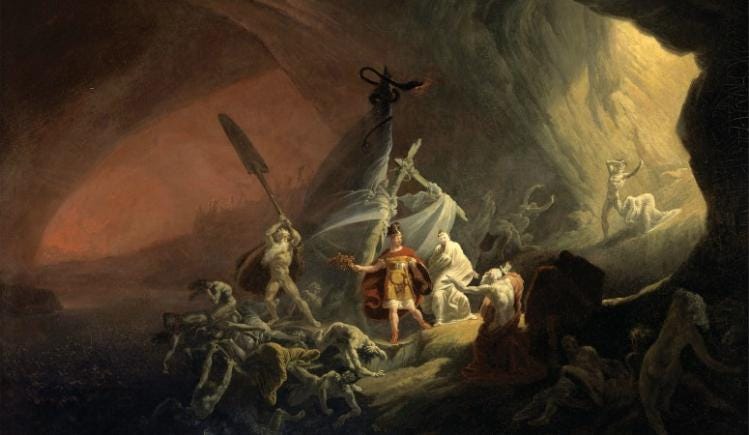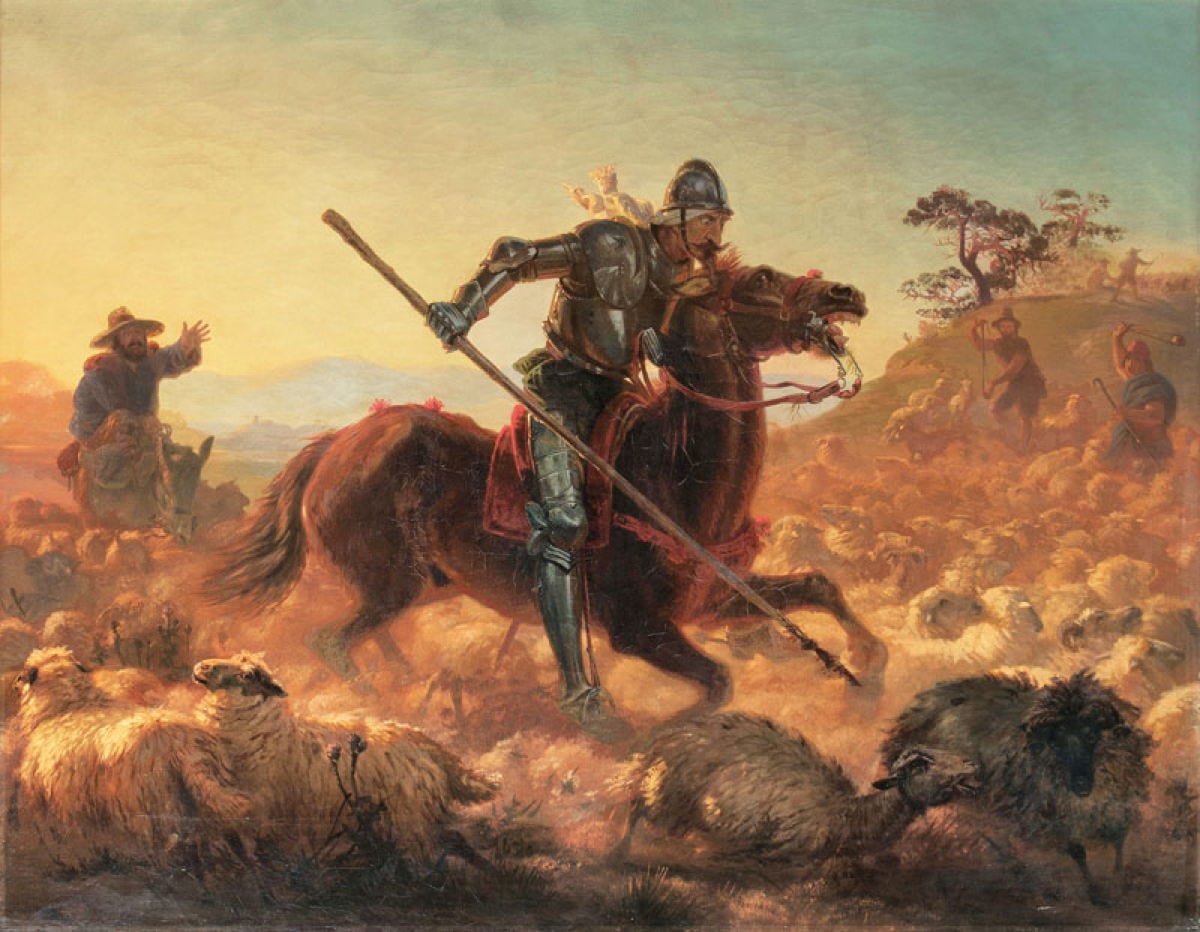The Secret Lesson of Don Quixote
And the quest for meaning
Don Quixote is celebrated for its humor, wit, and comedic tales of its protagonist, but there’s a hidden layer of wisdom in the text that’s easy to miss.
At the heart of the novel is a riveting tale that draws comparison to Virgil’s Aeneid, Dante’s Inferno, and even the crucifixion of Christ himself.
The tale is Montesinos Cave — an excerpt in which Don Quixote descends into a cave’s depths and discovers a surreal fantasy that will point him to his life’s ultimate destiny.
When you understand its wisdom, you discover the key insight of the Great Books that not only built Western Civilization, but helps you rediscover your life’s adventure, wonder, and purpose in a modern age that has forgotten how to dream.
Here’s the wisdom of Don Quixote and Montesinos cave, and how it can help lead you to your destiny…
Don’t forget to join our FREE book club!
We started a digital book club to study the great texts of Western Civilization — from Dante to Dostoevsky — together. Inside, you’ll get:
Live community book discussions (bi-weekly)
New, deep-dive literature essays every week
The entire archive of book reviews + our 100 great texts reading list
Our next book discussion will take place on September 16 at 12pm ET! We are currently voting on which book we read next inside the community.
Sign up below to attend — all paid members can join the live discussion up on stage…
Note: paid subscribers via Substack will automatically receive an access link for the live calls.
Deception and Disillusion
To recap the plot of Don Quixote — it follows Alonso Quixano, a 50-year-old Spanish nobleman who loves books about chivalry. He reads so many that he goes insane and believes he’s become a knight named Don Quixote.
With his new identity, he takes a squire — Sancho Panza — and rides off into the countryside on a series of adventures.
The story has a Part 1 and Part 2.
The theme of Part 1 is idealism vs. realism:
Don Quixote is the dreamer who loves the world as he wants it to be — a world of dragons, castles, and maidens where chivalry flourishes. This idealism clashes with the realism of a cynical Spain that scoffs at chivalry.
Part 1 asks: what wisdom in Don Quixote’s idealism has the modern world lost and needs to rediscover?
Part 2, however, takes a different tone.
The theme of Part 2 is engaño vs. desengaño — Spanish words for deception and disillusion.
Here the emphasis is personal. Don Quixote lives in a world of self-deception. His illusions bring comfort but separate him from truth.
The danger is that whenever he risks discovering the truth — that he’s not a knight in a fantastical medieval world — he risks falling into disillusion.
In other words, he is divorced from the truth, yet needs the Truth in order to be set free… but at the same time this very truth threatens to destroy him outright.
How does Don Quixote solve this issue?
The answer comes in Montesinos cave.
Descending the Cave
Don Quixote hears about the legendary Montesinos Cave from local shepherds in the Spanish countryside.
They tell him it’s a cavern filled with fantastical apparitions that can give visitors extraordinary knowledge.
Don Quixote decides to seek the cave for himself, with a reluctant Sancho in tow.
They find the entrance and discover it’s subterranean — Don Quixote must be lowered in by rope.
Sancho helps him down, and as promised, he encounters marvelous apparitions.
Before him appear medieval knights, ladies, and other legendary characters from his fictional stories. In awe, he converses with these heroes about chivalry, virtue, and valor.
Yet the experience is also haunting. He feels a tension: he speaks to these figures as if they are real, yet knows they are characters of fiction.
For the first time, Don Quixote begins to question his reality — that appearances may not be what they seem.
This realization threatens the veil of his madness. It risks revealing a truth that could destroy Don Quixote and all his medieval adventures in one blow.
The risk deepens when he exits the cave: he claims to have spent three full days underground, but Sancho tells him it was only thirty minutes.
Again, the veil of deception is threatened. Don Quixote risks discovering that his identity is a lie, which could lead to disillusion and perhaps death.
Instead, he represses the truth, tells Sancho he was mistaken, and insists his cave visions were real.
Yet the cave will never leave him. Don Quixote doesn’t realize it yet, but his descent was as important as Dante’s into the Inferno. It’s also no accident that he spent three days underground — hinting at an impending death and resurrection.
In time, he will see that this cave experience led him to the ultimate revelation of his identity, the structure of reality, and his true destiny.
Wisdom, Death, and Rebirth
As suggested earlier, Don Quixote’s descent into Montesinos’ cave draws parallels to the greatest narratives of history.
It echoes Aeneas’ descent into the underworld in Virgil’s Aeneid, Dante’s descent into Hell in the Inferno, and of course, Christ’s three days in Hell before his Resurrection.
But what is the significance of this pattern?
Well, Don Quixote’s descent tells us much about his own search for meaning — and, in turn, the search for meaning of all mankind…





